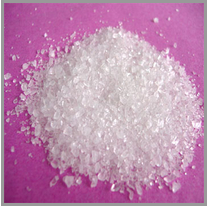Optical Glass

High Quality Optical Glass manufacturing relies heavily on the preciseness of the optical materials used, and the precision in which every step of the processes is conducted with.
Optical Materials below are divided into their elemental-families.
*For our Featured Fluorides & Rare Earth Fluoride Compounds click here
FLUORIDES
Fluoride compounds played an integral part in the early developments of optical glass materials and continue to be used in the manufacturing and development of new optical materials.
Aluminum Fluoride view product page
As an optical glass material, aluminum fluoride has a low refractive index, good mechanical strength, and is water resistant. Its low refractive index makes it a prime choice for anti-reflective coatings.
Summary of Properties & Applications: low refractive index, glass filler, ceramic body & glaze ingredient, refractory
Calcium Fluoride
As an optical glass material, calcium fluoride is resistant to thermal shock, insoluble in water, and has a low refractive index. These qualities make it useful anti-reflection applications. Additionally, calcium fluoride is approximately twice as hard as barium fluoride but less expensive.
Summary of Properties & Applications: thermal shock resistance, low RI, water insoluble, hard
Barium Fluoride
As an optical material, barium fluoride is one of the fastest scintillators for the detection of high energy particles such as X-rays and gamma rays. Barium fluoride has a lower UV transmittance as well as a lower water and thermal shock resistance than the other optical fluorides. Notably, however, it also has the highest resistance to high-energy radiation.
Summary of Properties & Applications: lower UV transmittance, high resistance to high-energy radiation, (ceramic) flux & opacifier
Lithium Fluoride
Along with magnesium fluoride, lithium fluoride is one of the materials that will transmit in the vacuum ultra violet range.
Summary of Properties & Applications: —
Magnesium Fluoride
As an optical material, magnesium fluoride exhibits transparency across a very wide range of wavelengths and has a low refractive index just below lithium fluoride’s. High quality magnesium fluoride can be pricey and lower grades may be useful in applications up to the infrared levels, although at this level it becomes inferior to calcium fluoride. *Along with lithium fluoride, lithium fluoride is one of the materials that will transmit in the vacuum ultra violet range.
Summary of Properties & Applications: transparency, low RI, birefringent
Strontium Fluoride
A brittle white material that may be used in optics, with intermediate level qualities.
Summary of Properties & Applications: water-non-soluble
OXIDES
Aluminum Hydroxide
Summary of Properties & Applications: —
Antimony Oxide
Summary of Properties & Applications: glass decolorizer, porcelain enamel opacifier
CARBONATES
Lithium Carbonate
Summary of Properties & Applications:flux, –
OTHER
Aluminum Metaphosphate
Al(PO3)3 is an inorganic material that is used in certain glazes, enamels, and glass.
Summary of Properties & Applications: low refractive index, glass filler, ceramic body & glaze ingredient, refractory
Barium Metaphosphate
Ba(PO3)2 is an inorganic, colorless, water-insoluble material that is best known for its aid in making low-melting, high thermal co-efficient, boron glass, specialty glasses and optical glasses (fluorophosphate optical glass).
Summary of Properties & Applications: high thermal co-efficient
Barite
Barite is used as a glass flux, and is also added to glass to add strength and brilliance.
Summary of Properties & Applications: flux, glass enhancer ingredient
Bentonite
Summary of Properties & Applications: —
Borax
Summary of Properties & Applications: flux agent, borax glass
- Aluminum Fluoride
- Aluminum Metaphosphate
- Aluminum Hydroxide
- Antimony Oxide
- Barite
- Barium Metaphosphate
- Barium Fluoride
- Bentonite
- Borax
- Brucite
- Calcium Fluoride
- Clay Ball
- Clay Ball Calcined
- Clay Ball Enamel
- Clay Ball Fire/Refractory
- Kaolin
- Lithium Carbonate
- Lithium Fluoride
- Magnesite (Caustic Calcined)
- Magnesite (Deadburned & Sinter)
- Magnesium Oxide
- Potassium Chloride
- Rutile, TiO2
- RE,SPC
- Talc
- Zinc Oxide
back to top






